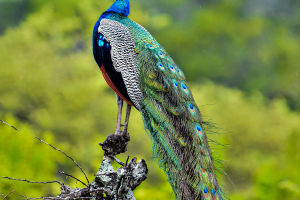Zebras, known for their striking black and white stripes, are herbivorous animals. They primarily feed on grass but are also known to consume shrubs, branches, leaves, and even bark.
These unique creatures inhabit diverse habitats and often follow a fixed migration route. Despite their extraordinary appearance, zebras produce a low, hissing call that can be compared to a "barking donkey."
They possess excellent vision, allowing them to see both distant and nearby objects, and their acute hearing keeps them alert during feeding, ensuring they can detect potential threats.
When foraging, zebras take turns acting as guards, watching out for danger. If a threat is detected, a long hissing warning signal is issued, prompting the group to cease eating and swiftly escape. Zebras are known for their speed and endurance, capable of reaching speeds of 60-80 km per hour. This agility often aids their escape from fierce predators such as lions and leopards.
Zebras exhibit complex social behaviors and maintain community relationships through various postures and sounds. Their distinctive black and white stripes serve as a form of protective coloration, providing camouflage in the savannah and making it difficult for predators to spot them. These stripes also play a role in individual identification.
Reproduction among zebras typically occurs at the end of the rainy season. Male zebras mate with multiple females, and the gestation period lasts approximately 11-12 months, resulting in the birth of a young zebra. Some zebra populations engage in long-distance migrations to find better food and water sources. These migrations can span hundreds of kilometers as they repeat the same route annually.
Zebras showcase intelligence and resourcefulness, allowing them to adapt swiftly to environmental changes and learn how to avoid threats. They are predominantly active during the night, as it offers a safer time free from scorching heat and natural predators.
The evolutionary origin of zebras' black and white stripes has puzzled scientists for over a century. The topic was discussed by eminent Victorian biologists such as Charles Darwin and Alfred Russell Wallace 150 years ago. Researchers have proposed numerous hypotheses to explain the purpose of these stripes, including camouflage, warning signals, and individual recognition.
At least 18 reasons have been suggested, with camouflage, protection from mosquito bites, and cooling effects being the main areas of study.
One long-standing belief is that thermoregulation plays a role in the evolution of zebras' stripes. The prevailing idea is that the black stripes absorb heat, increasing the zebra's temperature, while the white stripes reflect light, aiding in cooling when zebras are exposed to the sun for prolonged periods while feeding.
Zebras cool down through sweating, as the evaporation of sweat dissipates heat. However, the rate of evaporation must be rapid to prevent sweat from accumulating on the skin's surface. Equidae, the family of zebras, possess a protein called latherin that helps sweat spread to the tips of their hair, facilitating evaporation.
In a study published in the Journal of Natural History, the Cobbs reported that the black stripes on live zebras consistently register temperatures 12-15 degrees Celsius warmer than the white stripes during the warmer hours of the day. This temperature difference creates air currents between the black and white stripes, contributing to the cooling effect on the zebra's skin.
The intricate nature of zebras and their distinctive characteristics continue to fascinate scientists and wildlife enthusiasts alike. Further research is necessary to deepen our understanding of these remarkable animals and their unique adaptations in the dynamic ecosystems they inhabit.


